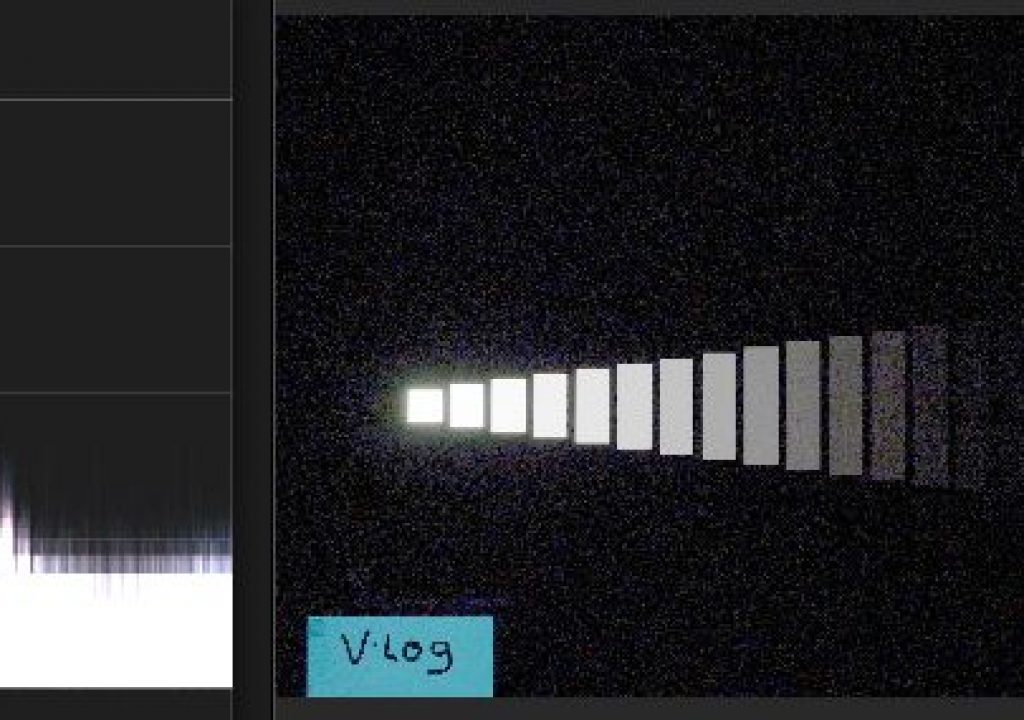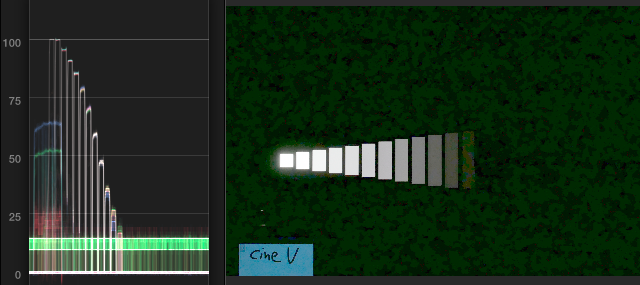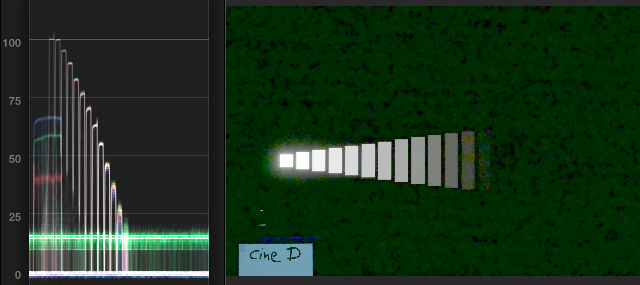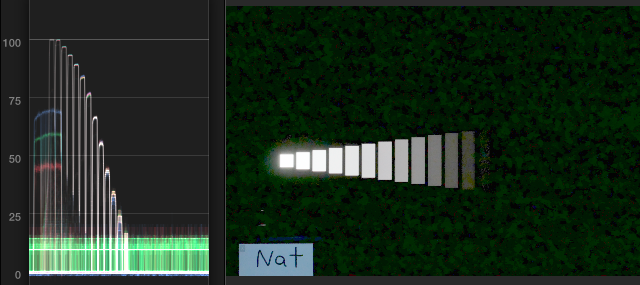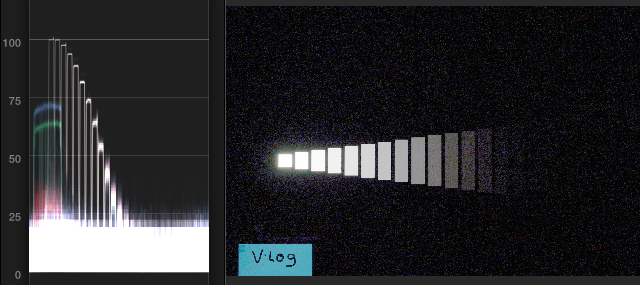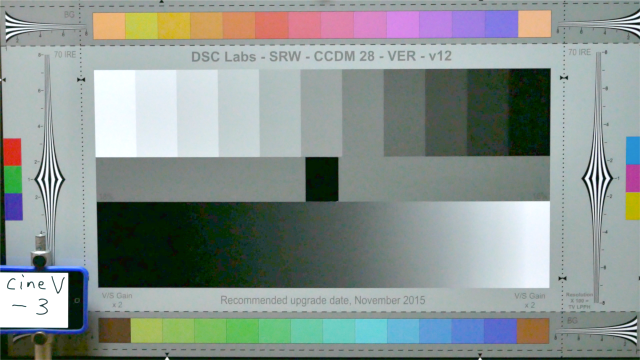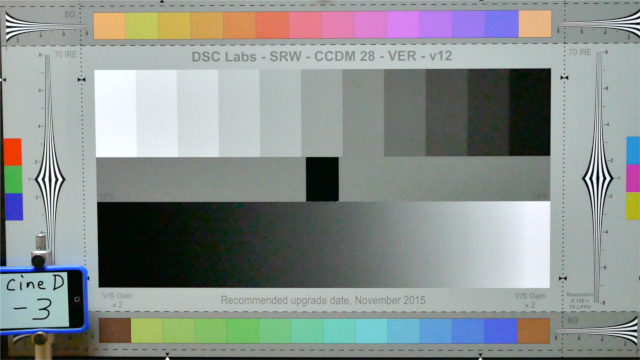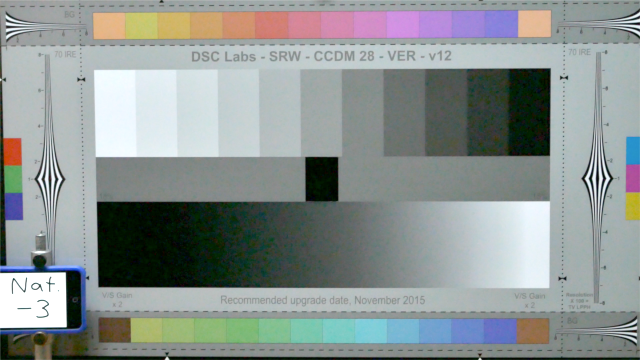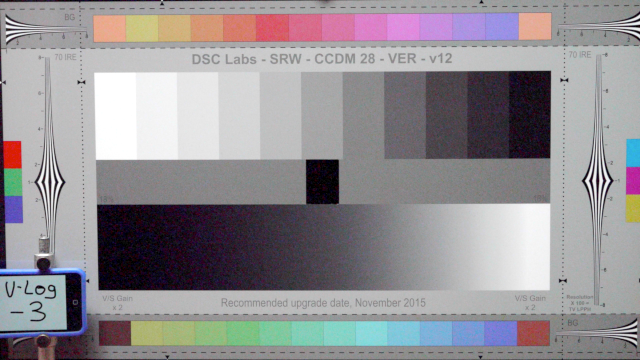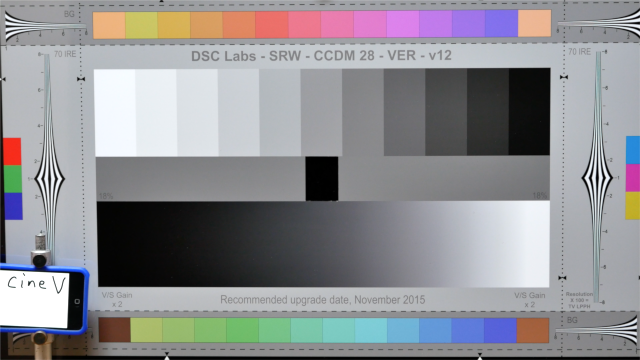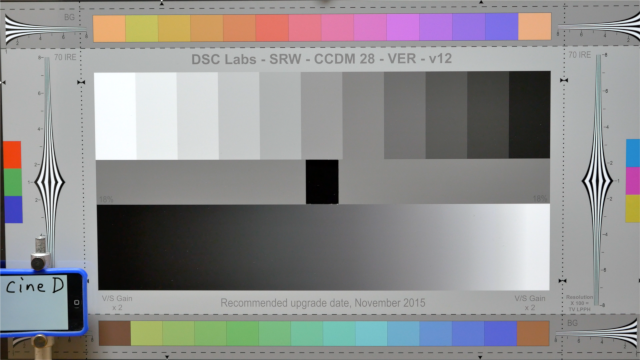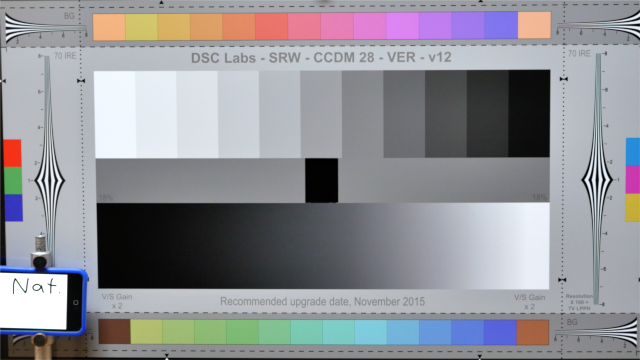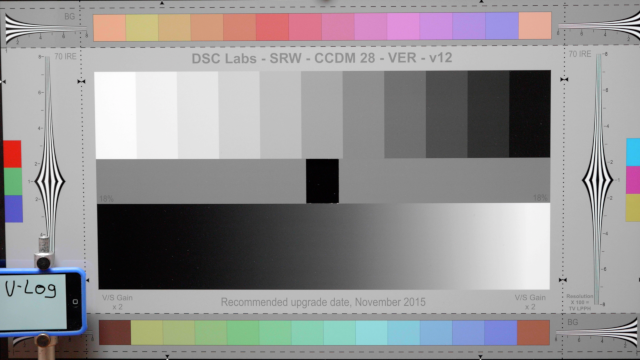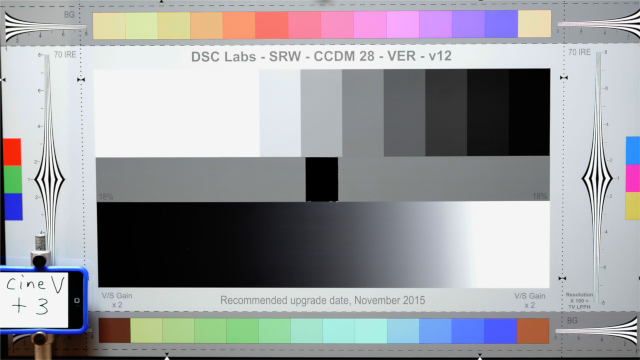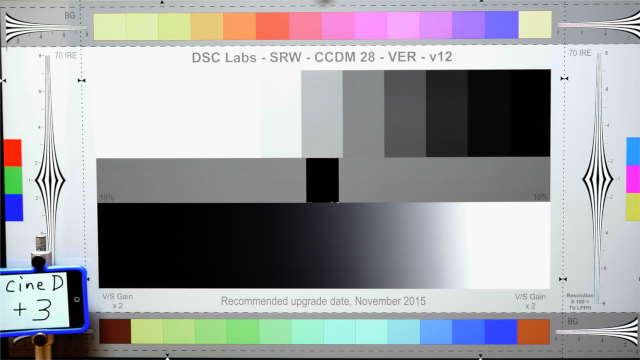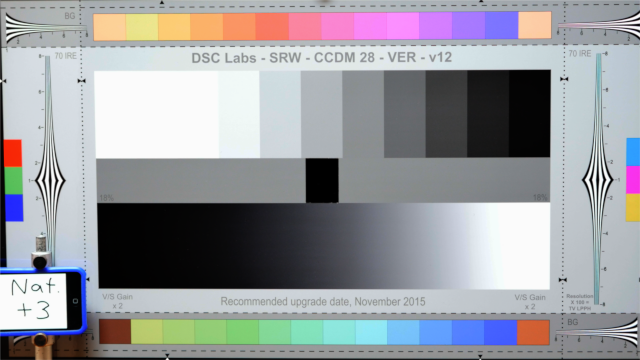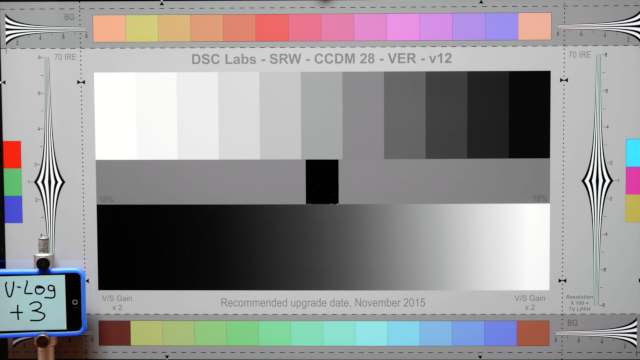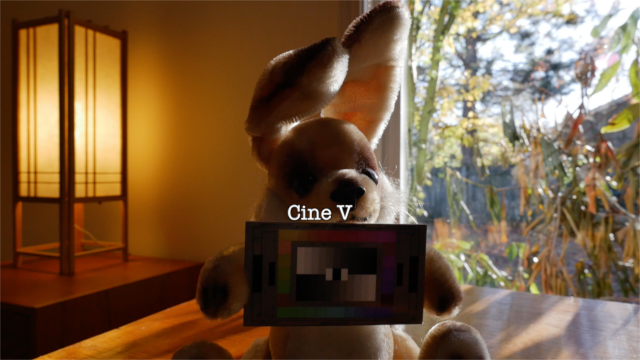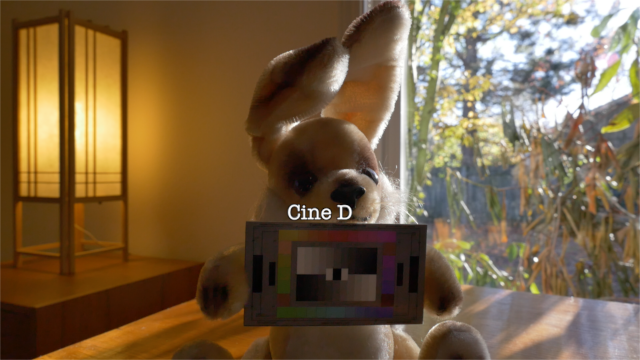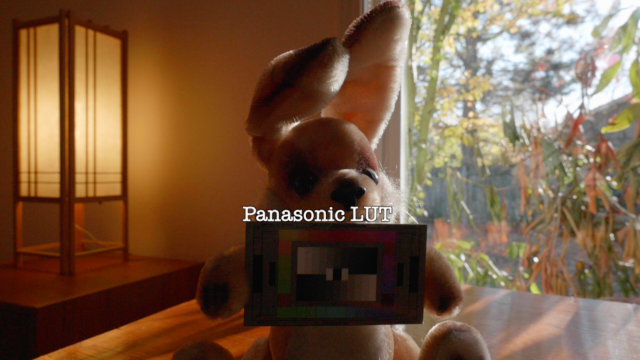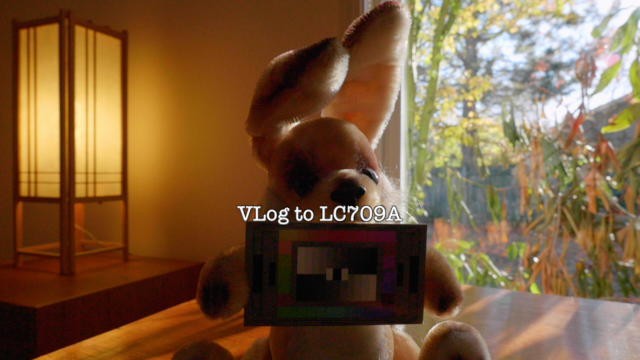The release of the V-Log L upgrade for the Panasonic GH4 brought new attention to log capture in affordable cameras, resulting in new waves of both interest and confusion. I’ve previously taken a first look at the GH4’s V-Log capabilities, focusing mostly on the luma and chroma noise implications of squishing a log image’s wider dynamic range into a narrower range of code values, and the limitations of recording log with a low-bitrate codec.
Now I look further at the GH4’s log mode, and discuss why you might want to use it. In Part 2 of this article, I’ll look at its drawbacks and side effects, and reveal some, um, interesting aspects of the GH4’s signal processing.
TL;DR version (because this is a long article):
- V-Log L on the GH4 doesn’t buy you much if any more usable DR; what it gains in headroom it loses to noise in the shadows.
- Log does however give you different tonal-scale handling and color rendering, which makes it an interesting and useful addition to the palette of GH4 looks.
Interested? Read on. Not interested? Here are some cat videos.
Why Log?
Although I’m using the GH4, it’s not the only log-capable camera around: in addition to higher-end kit like the ARRI Alexa, Sony F65, F55, & F5, Canon C300, C500, & 1DC, and Panasonic Varicams, there’s an increasing array of sub-$10K cameras with some sort of log capability: Canon C100 & XC10, Sony FS700, FS7, FS5, A7S, A7S II, A7R II, & RX10 II & III, and the Panasonic AG-DVX200 — and I’m sure I’ve missed some, at that. So even if you’re not a GH4 shooter, you might be interested in some of the tradeoffs in shooting log, as illustrated by the GH4.
I’ll discuss some of the reasons you might (or might not) want to capture in log, and look at more real-world cases where log works on the GH4… and where it doesn’t.
Capture a Greater Dynamic Range
The first benefit of log capture — at least the first one most people think of — is that log lets you record a wider dynamic range than Rec.709 or other “WYSIWYG” gamma-encoded tonal curves. Log curves are not designed for direct viewability; instead they capture the image in a “flat”, neutral manner across the tonal scale, with no (or little) change in contrast or color rendering depending on brightness level. They’re intended to be color-graded for post-processing to generate the final picture, ideally with a LUT (look-up table) to map the logarithmic tonal scale (in which a one-stop change in brightness causes the same change in the in the code values used to represent it, regardless of where on the tonal scale that brightness is) to a gamma-encoded, “visually linear” scale, a power-law tonal mapping that better matches our visual response to brightness. It’s a nonlinear conversion, as you can see looking at unprocessed captures of a DSC Labs Cine-ChromaDuMonde chart, which has an 11-step gamma-encoded grayscale and a smooth logarithmic ramp:


Panasonic says that the GH4 can see 12 stops of dynamic range in V-Log L. I previously measured the camera at 10–11 stops using its various gamma-encoded captures, and 13 stops were visible if you stretched out the shadows in Cinelike D gamma.
I re-ran the test again, comparing three of the gammas against V-Log: the neutral and wide-range Cinelike D, the contrasty Cinelike V, and the Natural gamma. Again, I used a Xyla 21 (each step is a stop darker than the step to its left), opening the iris until the first step clipped on a connected WFM and then opening further until the second step just hit of the first, clipped step. All clips were recorded in UHD.
The shooting setup (the lamp off the left side of the image, used for this photo, was turned off during the test; the iPod “slate” was repositioned below the bright bar before clips were recorded):
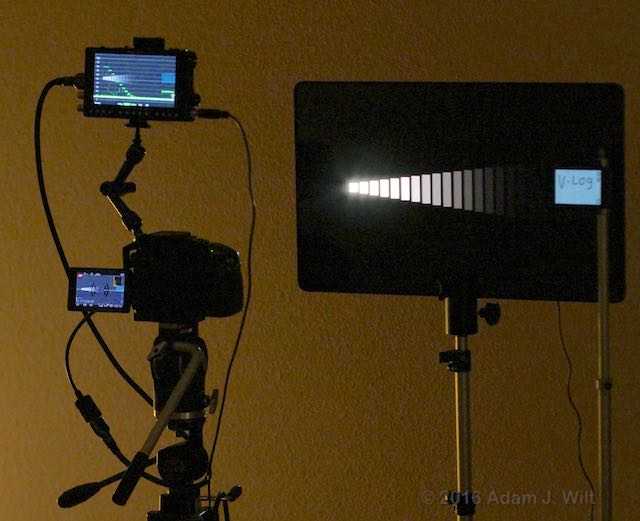
This time around, I saw about a stop less on the gammas: 10 on Cinelike V, 11 on Cinelike D and just barely 11 for Natural.
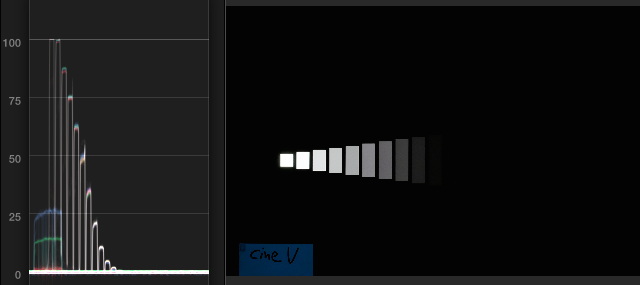
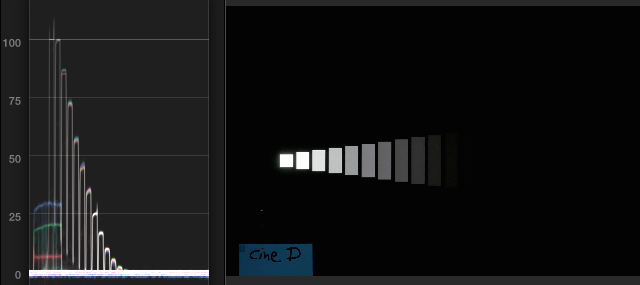
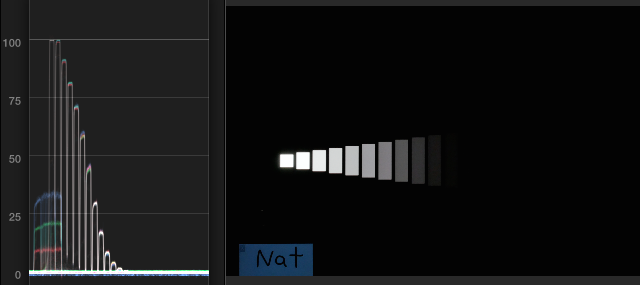
Why the difference? Different camera body; different firmware build; different Xyla chart; probably a much darker room: DR readings with Xyla demand absolute blackness for accuracy, as even the slightest ambient spill acts as a “fill light” in the shadows. In the “BTS” shot above with the room light on, captured with a second GH4, I count 15 stops on the Xyla between clipping and blackness. Trust me, that just ain’t right.
Here’s the same shot with V-Log: without a LUT, and with the Panasonic-suggested LUT plus a slight brightness/contrast boost in LUT Loader to match the levels of the other clips:
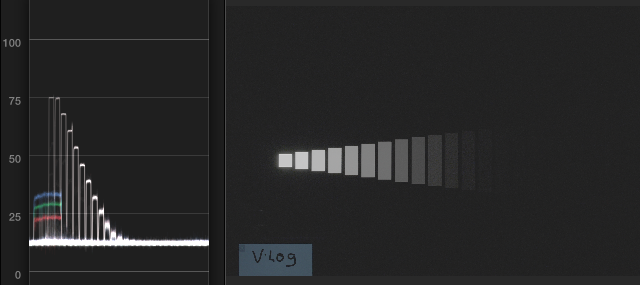
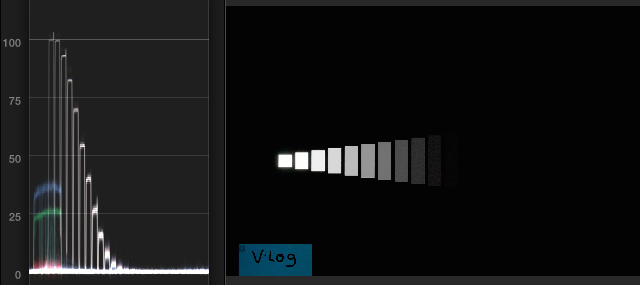
I see 12 stops here, just as Panasonic promised. It’s not a huge difference, but it is there. Here are all four shots again, with shadows stretched by boosting the midtone slider to 100% in FCPX’s color board control:
Yes, there’s more in the shadows with V-Log, and the shadows don’t have as much green chroma noise (we’ll come back to that in a bit), but look at the WFM traces. See how blurry the lower steps are in V-Log compared to the gamma curves? We’ll come back to that in a bit, too.
Were this a VariCam V35 or LT, or an Alexa, we’d likely see about 14 stops in log capture; those cameras are capable of capturing a significantly wider dynamic range in log than in standard gammas. The GH4, though, has to be content with a mere 12 stops, only a stop or two more than its gamma-encoded captures allow.
It’s worth noting here that wide-DR capture will be increasingly important as we move into a future where extended dynamic range viewing, whether via Dolby Vision or some other HDR display system, becomes more widely available.
Neutral Rendering Across the Tonal Scale
Log recording treats the shadows, midtones, and highlights equally: regardless of where on the tonal scale something lies, it gets captured the same way.
That’s true for 90% of the scale, but all log curves show a flattened “toe” in the deep shadows, where the signal is getting close to zero. For the log curve to continue in a straight-line fashion, the camera’s gain would have to be infinite at the zero-signal point. That, unfortunately, is rather difficult to obtain in the real world.
Gamma-encoded curves don’t treat all brightness levels equally, especially with the alterations used in real-world camera to increase image quality. While midtones are captured fairly consistently, both shadows and highlights are processed differently. Black stretching or black compression, knees, and S-curved highlight handling all cause color and tonal rendering differences. Many cameras also desaturate shadows, and some also limit or reduce highlight saturation to maintain a more natural look. All of these differences improve the look of the image, but this look is “baked in”: if you need to push or pull the image, the baked-in color and brightness differences get pushed or pulled around too, which can make matching images more difficult if not well-nigh impossible.
Let’s take that same Cine-ChromaDuMonde chart again, and expose it three stops under, normally, and three stops over, and then try to grade all clips back to a “normal” appearance, with the whites at 100%, the midgrays at 50%, and the black at 0%. Again, I’m doing this very coarsely with the shadows/midtones/highlights controls in FCPX, but doing the same thing using other lift/gamma/gain grading tools gives comparable results. (Note that I used a higher brightness setting on my iPod “slate” for the CineV and Nat runs.)
Three stops underexposed:
Normal exposure:
Three stops overexposed:
The “over” clips show a marked difference: the extra stop of headroom in the V-Log capture kept all but the top chip in the grayscale out of clipping; that was an unplanned accident. Even so, it’s illustrative of what happens with wider-DR cameras; they have the headroom in their log captures that they don’t in WYSIWYG gamma curves.
The V-Log clips maintain somewhat more color consistency across the exposure variations, and also handles shadow detail more consistently: the gamma curves tend to crush their shadows, so you’ll see more banding (quantization or bit-defect errors) as the underexposed shadows are stretched back into the midtones.
This is one of the less-appreciated virtues of log recording: if you need to push or pull your exposure in post, you can do so with less tonal scale and color distortion using a log image than a gamma-encoded image with toe and shoulder compensations baked in.
However, the underexposed V-Log clip shows significantly more noise in the midtones and shadows than the other underexposed clips do. Look back on the Xyla waveforms above; those fat traces on the V-Log WFM are reflections of this same artifact.
Alister Chapman nicely explains why noisy-looking log images aren’t (usually) really more noisy than gamma-encoded images, and that’s normally the case — but I’m finding that the noise in the GH4’s V-Log shadows stays noisy even after grading them back down to the levels and contrasts where they belong. Hmm…
Better (or at least different) Color Rendering
Gamma-encoded images, as mentioned, have their color baked in, and that’s fine… if you like the look that’s baked in. Color handling, especially when it comes to smoothly handling hue and saturation variations in highlights and shadows, is a surprisingly difficult task, and the stock solutions that manufacturers come up with don’t always please.
If instead you record a log image with “just the facts” color recording, you can use LUTs and/or custom grades in post to shape the look any way you like. Whether you use the stock Panasonic LUT (which is really designed for the 14-stop Varicam’s V-Log and the Varicam’s color rendering), “cross process” your footage by using the LUT for a different camera, or roll your own special sauce using Resolve or the clever utility LUTCalc, as Art Adams discusses. These days, there are no shortage of V-Log LUTs for the GH4.
Yes, you can always apply LUTs and grading to a gamma-captured image, too, and that’s a perfectly valid way to work. You may have to work harder to get colors to track cleanly over critical values of the tonal scale, since the baked-in look may have already made certain choices that may not agree with you, and some subtlety may be lost.
Here’s the same scene captured in Cinelike V, Cinelike D, and V-Log, with the V-Log “developed” using the stock Panasonic LUT and with a LUTCalc LUT using the V-Log input characteristics and outputting Rec.709 gamma and LC709A color. The camera’s meter was trusted for exposure. I matched levels roughly in post but didn’t try to match the tonal scales precisely. Clips were captured in full HD.
Yes, it’s a nasty image — it’s supposed to be. The things to look at here are how the light from the lamp is handled, both on the lampshade and on the wall; and the way the light wraps around Barney the bunny. To my eye, both the V-Log images handle these gradations of tone and color more naturally than either of the gamma-captured images.
Keep Shadows out of Codec Mud
Refer again to that first image of the Xyla chart, captured in V-Log:

See how the black level is elevated to a milky gray? Why is Panasonic wasting code values below 12% or so?
Consider this: codecs work by throwing away “extra” information where you’re least likely to notice it, and you’re least likely to notice missing details in the deep shadows. If you need to go digging that detail out of the shadows, you’ll be sorely out of luck.
If we look at 1:1 details of the 3-stop-under charts graded back up three stops, the difference in shadow detail becomes clear: look at the end of the horizontal resolution trumpet behind and below the iPod, or the “18%” mark on the central gray patch.
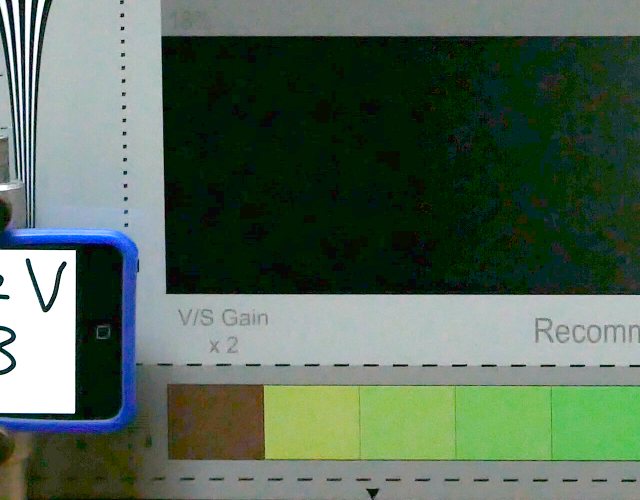
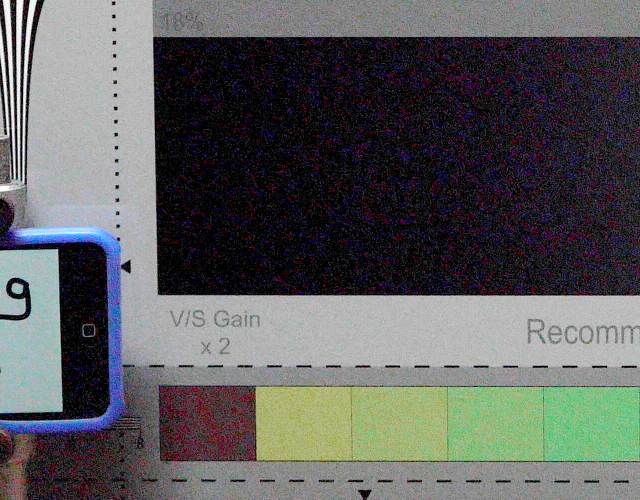
Both clips were captured at the same exposure level, with the same sharpness and noise-reduction settings. Both clips were recorded internally as UHD at 100 Mbps, though these extracts are from a downsized HD timeline. The high-contrast vertical trumpet on the left side is equally crisp in both images, but the low-contrast text and the shaded horizontal trumpet, buried in the Cinelike V’s shadows, have been smudged by the recording, while they retain their details when captured safely above 12% in V-Log. Yes, there’s that pesky noise again, but at least the details are still there. (These differences are also present to the same degree in the UHD version of this timeline.)
This is less of a factor with higher-bitrate codecs, but it still happens. It seems Panasonic has strategically elevated V-Log’s black level to avoid the problem. While the GH4 can’t fully exploit this clever encoding due to the noise issues (see Part 2), it’s definitely an advantage for the DVX200, the Varicam LT, and the Varicam 35.
In part 2, I’ll look at why you might not want to shoot log; differences between 8-bit and 10-bit capture; and some oddities in how the GH4 records and outputs signals.
Disclosure: I bought my GH4s with my own money at market prices. I had a DVX200 sent from Panasonic for review; it’s long since been returned. DSC Labs charts have been purchased or provided to me on long-term loans. The Odyssey7Q+ and PIX-E5 recorders are on loan from their manufacturers for software development and beta-testing. I worked for Video Devices to develop the UI and ‘scopes for the PIX-Es and I’ve worked for DSC Labs at trade shows; aside from that there is no material relationship between me and any of the vendors mentioned.

Filmtools
Filmmakers go-to destination for pre-production, production & post production equipment!
Shop Now